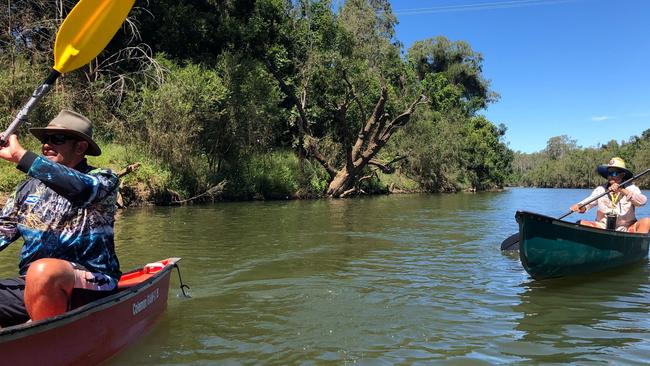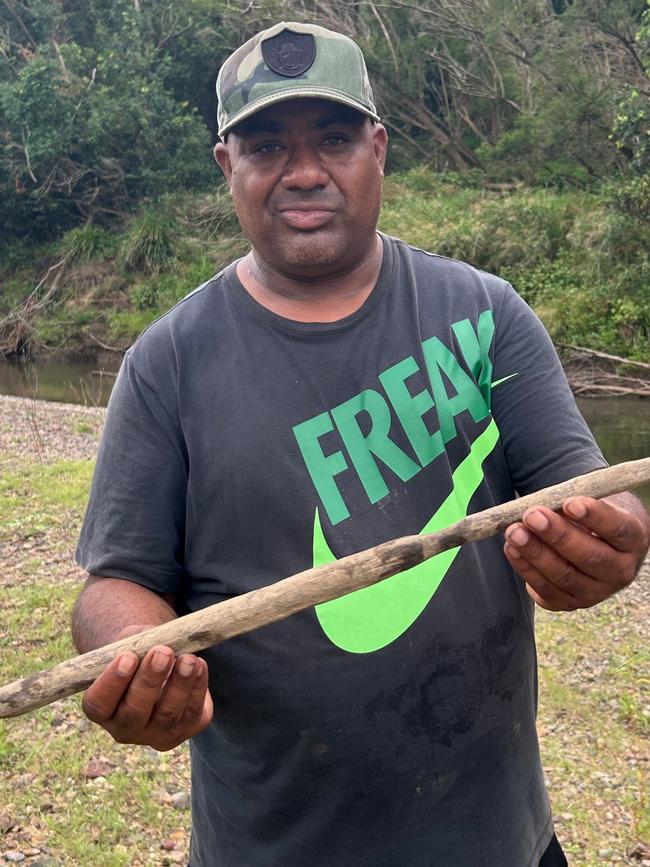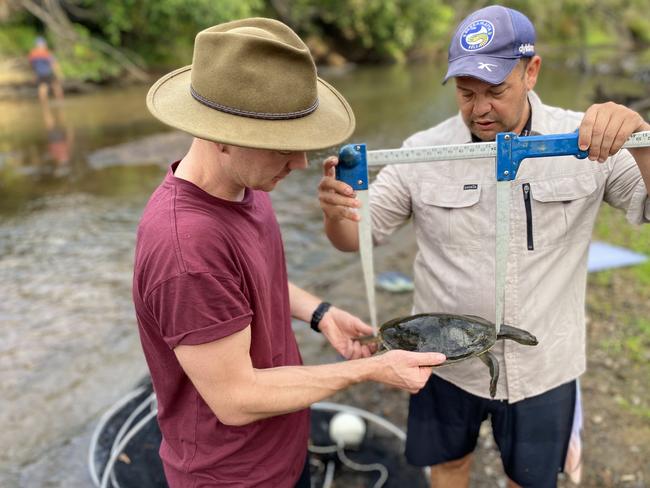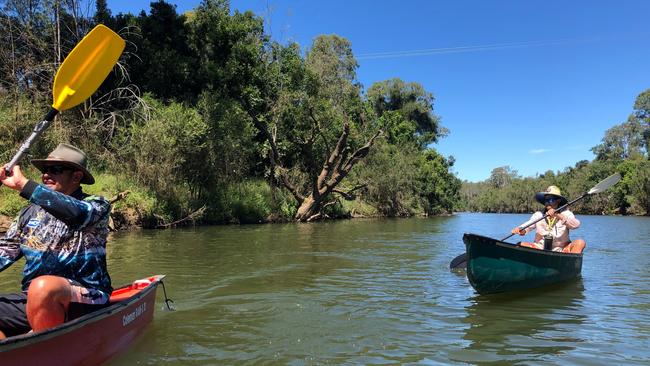Mary River expedition reveals First Nations artefacts, habitats
A 10-day scientific and cultural trip between Kenilworth and Tiaro has uncovered a wealth of cultural information about the Mary River, and multiple ancient artefacts.

Gympie
Don't miss out on the headlines from Gympie. Followed categories will be added to My News.
It sounds like a scene from an Indiana Jones movie: a group of explorers making their way along a river searching for artefacts and signs of ancient life.
However, this 10-day, 150km scientific and cultural journey along the Mary River was part of a massive joint effort to document flood damage, endangered species and historical Aboriginal artefacts.
Backed by the federal government’s program for Emergency Flood Recovery for Wildlife and Habitat, eight organisations united to map a unique part of Queensland.
The Burnett Mary Regional Group, Griffith University and Mary River Catchment Co-ordinating Committee came together with aboriginal stakeholders the Kabi Kabi Peoples Aboriginal Corporation, Jinibara People Aboriginal Corporation, Butchulla Aboriginal Corporation and the Butchulla Native Title Aboriginal Corporation for the undertaking.
From Kenilworth to Tiaro, scientists and traditional owners shared their experience and knowledge of the land to map flood impact, threatened species and vegetation.
The journey also revealed ancient evidence of occupation along the entire river length, with tree scars marking landmarks and territorial boundaries.

These scars came from wood used in a variety of ways, from shelter to tool making, and the expedition revealed a wealth of ancient artefacts.
Butchulla Traditional Owner Conway Burns said the expedition connected tribes to their traditional homeland.
“Our people have lived alongside the Mary River for thousands of years, and the information gathered during this trip will help ensure the river and its cultural heritage are protected for generations to come, and it will also help our mobs strengthen connections,” Mr Burns said.

Scientific evidence revealed baseline habitat records for native and endangered flora and fauna, including the Mary River turtle, Mary River cod, Australian lungfish and white-throated snapping turtle.
The data collected will be submitted to the Mary River Regional Environmental Account in the hopes of “unlocking” future conservation investment.

“To facilitate investment in natural assets, we must first value them, but we can’t value assets until we know what they are, where they are, and how much there is,” said Sheila Charlesworth the Burnett Mary Regional Group CEO.
“That is what this expedition achieves. We now have a stocktake of the Mary River’s natural and cultural assets. This information will become priceless.”




